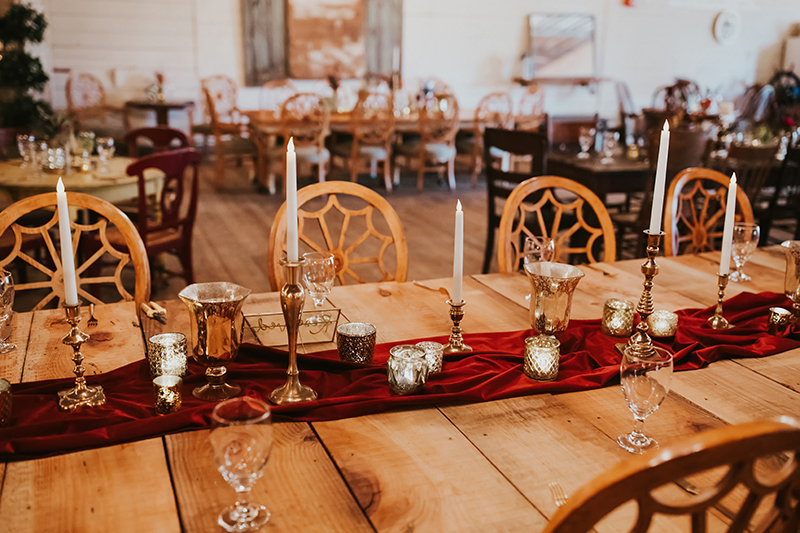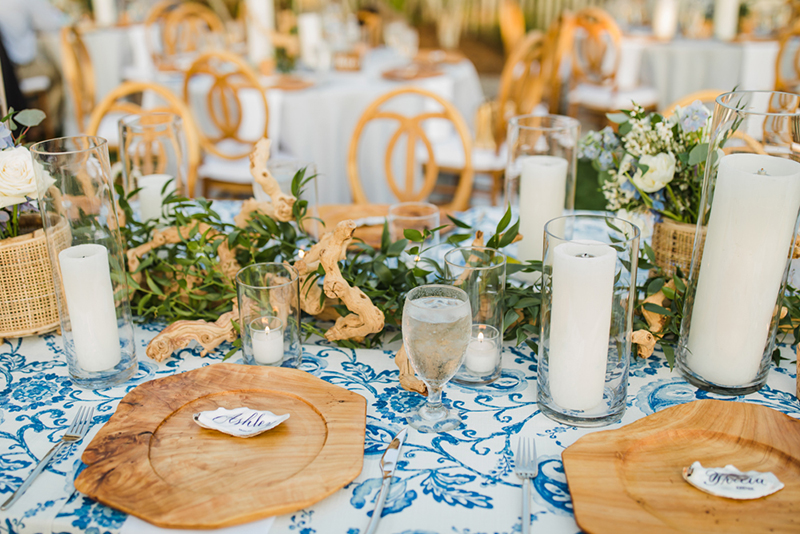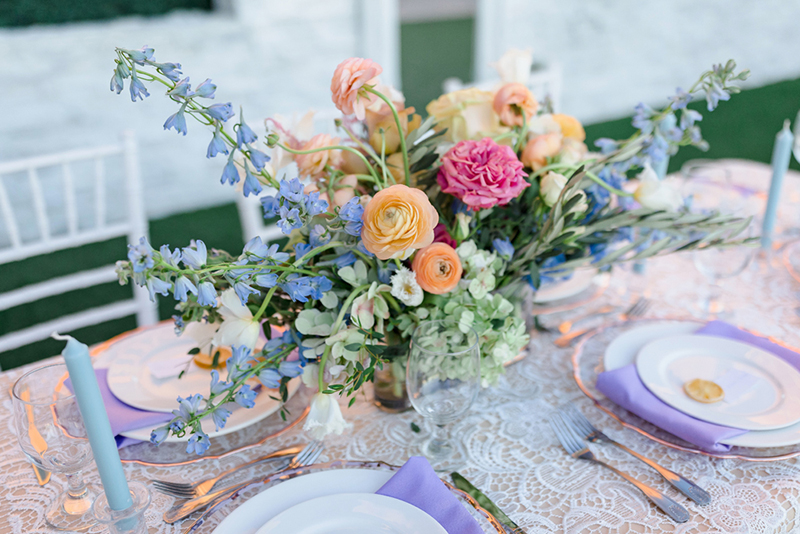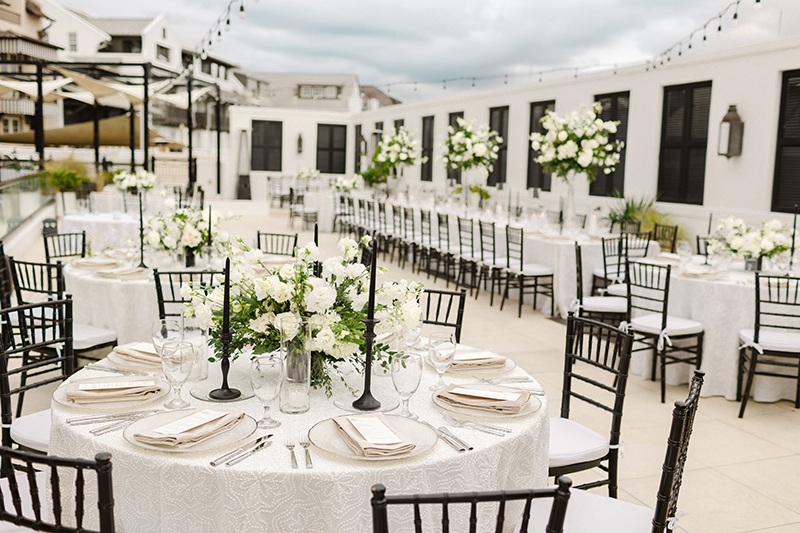How To Design Reception Tablescapes
A well-designed table can set the mood of your reception. Abundant florals, twinkling candlelight and sparkling tableware make for a welcoming, enjoyable dining experience for guests.
Tablescaping, or table setting, involves creative, intentional arrangement to convey a style or theme. For weddings, this often includes linens, centerpieces and tableware. Whether designing as a couple or with the help of a planner, the pursuit for a unique and cohesive design will require some key considerations.
Table and Chairs

Start with the basics — seating style, shape and size. Think about the reception space and how you want guests to interact with it and how you want them to feel. Options range from round, banquet-style or square tables to a variation of shapes and sizes. Composition can influence style with wood, metal, plastic and glass options. Maybe you decide to keep the rustic tables uncovered or with a simple fabric runner while you decide to cover plastic tables with luxury linens. Garden chairs, cross-back chairs and bistro chairs are all popular options. Industrial metal chairs juxtapose nicely with weathered wood tables. A French bistro chair looks lovely at a garden-themed wedding. A wooden chair tied with a bow is charming and a linen chair cover exudes elegance. For extra comfort, eye-catching throw pillows make fun additions.
Color
Much of your tablscape’s design will be influenced by the colors and theme you’ve selected for your wedding. The best way to determine this is through a mood board, so you can determine the hues and styles you’re drawn to. You’ll discover whether you’re drawn to monochromatic, vivid or classic-white color schemes. The textures, textiles and design elements you gravitate toward can determine whether you’re inclined to classic elegance, boho, modern, rustic or a theme entirely unique to you.
Linens

Linens are a great way to add color and texture to a tablescape. Tablecloths come in a variety of materials beyond cotton — velvet, silk, burlap, chiffon and even sequin. Add more dimension with a table runner in a juxtaposing fabric or bold shade. Try a neutral white tablecloth with a whimsical print runner or a jewel-toned tablecloth with a creamy taupe silk runner. While napkins are necessary, they can also be statement making. Consider tying them with a bow, using customized napkin rings, knotting them, rolling them, making them into flower shapes or tucking the menu into them.
Tableware
When setting a traditional wedding table, begin with a large charger plate, then dinner plate and topped with the salad plate. Then, lay out your flatware alongside each side of the plates and put the glasses at the top right corner of the plate. Last, place the napkins either on top of the plates or beneath the fork. The best way to add pops of color is through the charger as it’s the plate that remains on the table. Many opt for print or metallics. Dinner plates could be traditional white china, letting the other design elements steal the show. Or, for spring and summer weddings some couples have opted for mismatched florals print or lucite plates for a modern take. Most often wedding tables include a water glass and a wine glass. Other options could include champagne flutes for toasts and coffee and tea cups for after dinner enjoyment. Feel free to get creative with your drinkware depending on your signature drinks — beer steins, whiskey sifters or martini glasses. Colored glassware is a whimsical way to implement color.
Florals

While designing floral centerpieces, be sure to share with your florist your vision for the tables. Some opt to reuse florals from the ceremony for the reception space. While others have separate florals specifically for the reception tables. When putting florals on the table you want to ensure they don’t obstruct your guests’ view of one another or the dance floor. Options include: single stem vases, bud vases, florals and fruits in patterned bowls, a floral vine spanning the length of the table, floral installations hanging above the table, or floral vases on raised chargers.
Decor

Much like florals, you’ll want to intentionally arrange any other table decor. If you are opting for a seating chart, you will want to have some display of the table number whether it be on a wine bottle, book, printed sign, wooden number, etc. Candles in varied sizes from tapered candlesticks to votives not only add to the romantic vibe, they provide subtle light. Other options to decorate the tables include photos, antiques, books, feathers, string lights, sentimental mementos or items unique to the locale — seashells, maracas, fans, stones, etc.
Menus and Signage
When considering the printed materials for your table setting, it’s best to select designs that match or are similar to your invitation suite. If possible, work with the same designer so your printed materials are cohesive. Paper products could include printed menus, table signage, name cards and thank you cards.
Feature photo courtesy of Jayleigh Flood Photography




